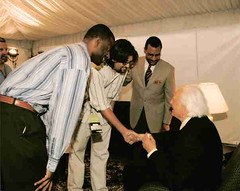Father Facts
Top Ten Father Facts
- 24 million children (34 percent) live absent their biological father.
- Nearly 20 million children (27 percent) live in single-parent homes.
- 1.35 million births (33 percent of all births) in 2000 occurred out of wedlock.
- 43 percent of first marriages dissolve within fifteen years; about 60 percent of divorcing couples have children; and approximately one million children each year experience the divorce of their parents.
- Over 3.3 million children live with an unmarried parent and the parent's cohabiting partner. The number of cohabiting couples with children has nearly doubled since 1990, from 891,000 to 1.7 million today.
- Fathers who live with their children are more likely to have a close, enduring relationship with their children than those who do not. The best predictor of father presence is marital status. Compared to children born within marriage, children born to cohabiting parents are three times as likely to experience father absence, and children born to unmarried, non-cohabiting parents are four times as likely to live in a father-absent home.
- About 40 percent of children in father-absent homes have not seen their father at all during the past year; 26 percent of absent fathers live in a different state than their children; and 50 percent of children living absent their father have never set foot in their father's home.
- Children who live absent their biological fathers are, on average, at least two to three times more likely to be poor, to use drugs, to experience educational, health, emotional and behavioral problems, to be victims of child abuse, and to engage in criminal behavior than their peers who live with their married, biological (or adoptive) parents.
- From 1960 to 1995, the proportion of children living in single-parent homes tripled, from 9 percent to 27 percent, and the proportion of children living with married parents declined. However, from 1995 to 2000, the proportion of children living in single-parent homes slightly declined, while the proportion of children living with two married parents remained stable.
- Children with involved, loving fathers are significantly more likely to do well in school, have healthy self-esteem, exhibit empathy and pro-social behavior, and avoid high-risk behaviors such as drug use, truancy, and criminal activity compared to children who have uninvolved fathers.













2 Comments:
It's amazing to read these stats and know what we're up against. It's incredible to see the number of strikes these children have against them before they even are old enough to make their own poor decisions. I just began a four month residential youth ministry training program on Thursday. Right now it's still just training. We don't begin to work with the kids for a couple of weeks. Where do you begin to teach a child God the father's love when they never had a real father.
Jeremy thank you for the stats to remind me of the crucial role i play as a father. It was a tough day and I needed the encouragement.
Post a Comment
<< Home